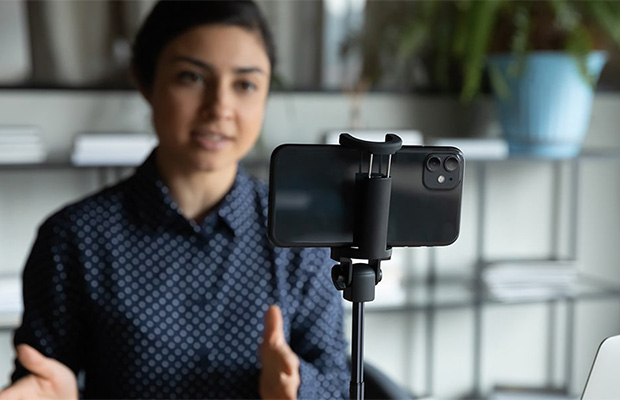Learn how to make a political campaign video in this article if you want to know the best way to get your video in front of the public.
Online video used to be an expensive luxury available only to viewers with a strong internet connection and well-funded political campaigns.
It’s possible that you’re having trouble coming up with content ideas that will appeal to voters whether you intend to produce carefully edited videos or quick clips captured on a mobile device.
Table of Contents
What is a Political Campaign Video?
We are aware of the effectiveness of political campaign videos, so how are they defined?
Any video used to solicit support for an election campaign financially or with votes is referred to as a political campaign video. Videos used in campaigns can boost general support for one candidate’s cause or opposition to another (similar to attack ads).)
Political campaign videos can take on a variety of shapes, from a quick selfie-style video on a campaign’s social media page to a professionally made video commercial that runs online or on TV, or any video in between.
A political ad’s main objective is frequently to persuade viewers to vote for (or against) a particular candidate for office or a particular ballot initiative. There is a wide range in the approaches campaigns use and the messages they convey in the video.
Videos used in campaigns must comply with specific rules and disclosures, just like all political advertising. To make sure your video ads are compliant, check your local, state, and federal laws.
Before you can run political advertisements on some social media platforms, you need to receive specific permission.
How to Make a Political Campaign Video
Below is our step-by-step guide to making a political video.

Step 1: Set Your Goals
Determine the results you want before you start creating a campaign video. Do you want to be known to x number of voters? a predetermined amount of donations? the need to register to vote is raised?
The content, format, and metrics you track along the way will all be influenced by what you decide you want to achieve with your video.
Set SMART objectives that advance your campaign’s overall objectives. Consider the scenario where your objective is to raise $15,000 in a single month. In this situation, you should promote your donation page for the upcoming month and include a call-to-action in your video with a link to it.
Step 2: Determine Your Target Audience.
Determine who you need to show your video to in order to reach your goal now that you know what it is.
Continuing with the previous example, if your campaign needs to raise money, you might make a video that targets politically active, well-off individuals who support the same political party as your candidate.
Step 3: Decide on Your Main Message and Video Style.
Create a message and a format you believe will be most persuasive while keeping your target audience and overall objective in mind.
If your campaign is already well-known, you might conduct a casual Q&A where you explain any information that voters might not be aware of. You must concentrate on your story and make a strong opening to your video if you want to spread the word about yourself.
While using similar brand elements to your other marketing materials, your video should have different content so that viewers can easily identify you.
Step 4: Plan Out Your Storyboard.
The production of your video will go more smoothly if you create a storyboard for it. It will be clear what resources you’ll need if you plan out your visuals and script in advance. You can plan out the specifics of your content using a variety of storyboarding tools.
At this point, you might also think about hiring outside help for your video, collaborating with a political ad agency, or hiring outside content marketing specialists. Your content can reach new heights with their assistance because they have the expertise and tools to do so.
Step 5: Produce the Video.
The video’s actual recording can now begin. Depending on the look you want, different tools will be needed. To convey your message effectively if you’re filming the video yourself, you’ll need at the very least a phone and good lighting.
Assume that the video will be published on a particular channel, so format it appropriately when shooting and editing. Check out this sizing chart if you intend to use social media. A blurry or oversized video will detract from the message.
Step 6: Publish and Promote Your Video
When your video is finished, distribute it through the appropriate channels while keeping in mind the rules and laws governing campaign advertising.
Video has the great advantage of being easily repurposed; you can use various clips in email blasts or on your website.
To ensure you are reaching the people who will respond to your message the best when using paid promotions, use precise targeting.
Sharing your video on social media is a good idea because you never know if it will become popular.
Step 7: Measure Your Success
Do you still have in mind the objectives you set at the beginning? Time to assess your performance at this point. Use the metrics that most closely match your overall objective to determine how well your video performed. For the following time, your strategy will need to be adjusted and improved based on this information.
Read More: How to Unblur a Video?
Political Campaign Video Ideas to Consider
Political campaign advertisements come in a plethora of styles, as we already mentioned. Depending on your campaign’s brand and who your target audience is, consider implementing the following ideas:
Idea 1: Introduction Video
Voters can understand who or what they are voting for by watching a well-made introduction video. Imagining you are a politician who has held office for a considerable amount of time In that case, you could use an introduction ad to tell your story and what you’ve accomplished to re-engage your current supporters or acquaint yourself with brand-new ones, as in the case of this recently popular Senator Ed Markey example.
The Senator’s campaign used humor and pop culture allusions in this video to share his lengthy voting history and win over viewers.
Use an introduction video as an opportunity to introduce yourself if people don’t already know you and what you can contribute to the discussion. Describe the implications of the policy change for ballot measures and why it matters.
Idea 2: Endorsement Video
You can use well-known people’s voices in a video ad to demonstrate their support by using an endorsement-style approach. This kind of advertisement demonstrates your authority and the backing of local authorities.
Naturally, you want to make sure that your target voter supports the candidates you are endorsing. They’re more likely to back you if they see you hanging out with people they love and know.
Idea 3: Q&A
A Q&A style video can be anything from a quick “ask-me-anything” on your A polished interview to an Instagram Story.
You can post an interview that has been more carefully crafted to explain the finer points of your policy positions or live stream this kind of video and answer questions from viewers, which is a great way to interact with your supporters (or detractors).
Idea 4: Community-Focused Content
Community-focused videos are another effective form of communication. Include members of the community who are in favor of your cause; viewers will identify with their stories and perhaps even spot some familiar faces.
Engaging the neighborhood can demonstrate how your campaign affects daily life.
While you may also be familiar with attack ads, in which a campaign disparages another candidate, you should probably avoid these. They have little to no impact on voter turnout, according to research, and even reflect poorly on the candidate.
Final Thoughts
A great way to spread your message and interact with potential voters is through political videos.
Follow these best practices when creating a political video: Establish a clear objective at the outset. A compelling and exciting video is a must. The call to action must not be overlooked.
Most modern campaigns require video content, which is simple to promote on various social media platforms. For instance, you might begin with an introductory political video before holding a Q&A session later on.
Last but not least, remember to include video in your voter turnout campaigns. Use them on your website and in social media. Remind voters to cast their ballots early or on election day.
Read Next:





